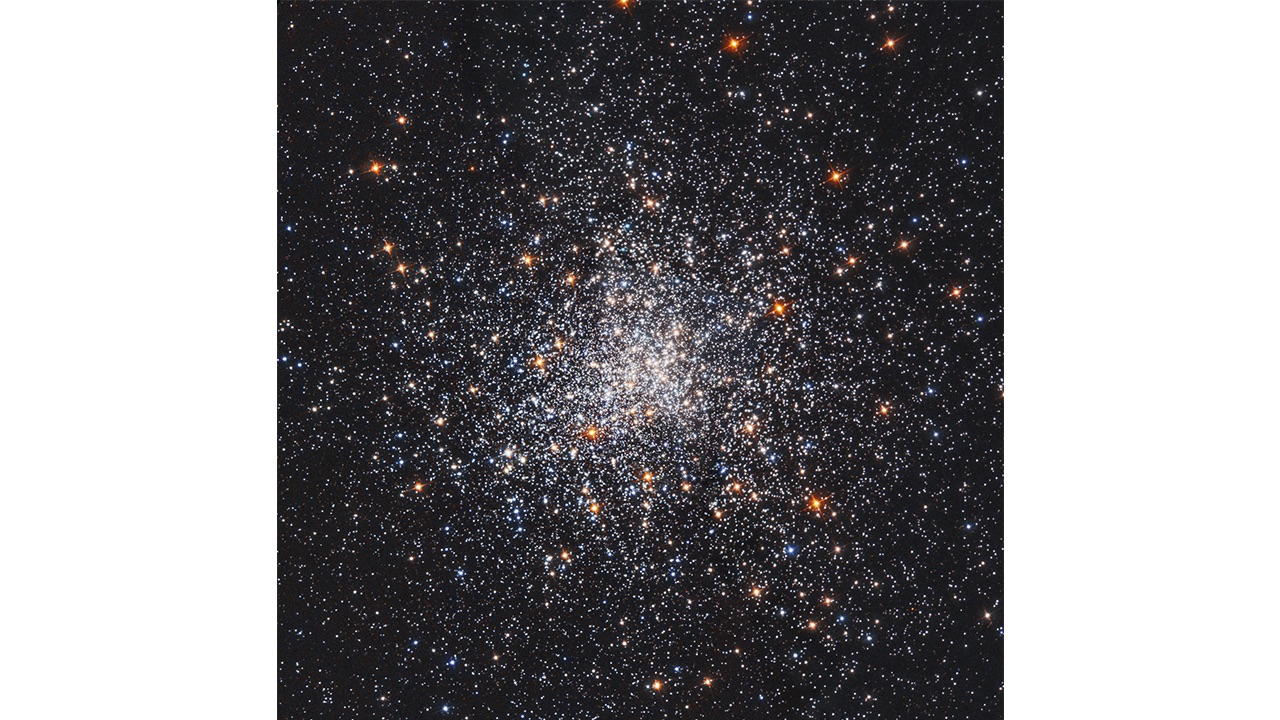Dreaming of a White Cosmos: Hubble Spots Star Blizzard
A seasonally appropriate blizzard of stars fills this Hubble Space Telescope view of a cluster located 41,000 light-years from Earth. The image captures 150,000 glittering stars.
Globular star clusters like this one, called Messier 79 or NGC 1904, contain some of the galaxy's oldest stars — some reaching an astonishing 11.7 billion years old, researchers said in a statement from Hubble. The clusters can contain as many as 1 million stars, and M79's 150,000 suns pack into a space 118 light-years across.
The image's coloration represents a natural view of the cluster, researchers said. Stars like Earth's sun appear yellow; reddish stars are giants near the end of the stellar life cycle, and most of the blue stars have used up their stores of hydrogen and have begun fusing helium.

Some fainter blue stars, called "blue stragglers," look like younger, hotter stars, but these actually formed from a stellar collision — whether because stars in a binary system merged or because unrelated stars crossed paths in the cluster's dense core, the researchers said.
M79 was discovered in 1780 by Pierre Méchain, who told fellow French astronomer Charles Messier about the object so Messier could include it in his famous catalog. Four years later, British astronomer William Herschel used a powerful telescope to determine that the object was a large cluster of stars. The Hubble image combines views taken in 1995 and 1997 by the space telescope's Wide Field and Planetary Camera 2.
Besides boasting a spectacular "snowstorm," M79 has an unusual location: "Most globular clusters are grouped around the central hub of our pinwheel-shaped galaxy," researchers said in the statement.
"However, M79's home is nearly on the opposite side of the sky from the direction of the galactic center," the statement said. "One idea for the cluster's unusual location is that its neighborhood may contain a higher-than-average density of stars, which fueled its formation. Another possibility is that M79 may have formed in an unusual dwarf galaxy that is merging with the Milky Way."
Get the Space.com Newsletter
Breaking space news, the latest updates on rocket launches, skywatching events and more!
Email Sarah Lewin at slewin@space.com or follow her @SarahExplains. Follow us @Spacedotcom, Facebook and Google+. Original article on Space.com.
Join our Space Forums to keep talking space on the latest missions, night sky and more! And if you have a news tip, correction or comment, let us know at: community@space.com.

Sarah Lewin started writing for Space.com in June of 2015 as a Staff Writer and became Associate Editor in 2019 . Her work has been featured by Scientific American, IEEE Spectrum, Quanta Magazine, Wired, The Scientist, Science Friday and WGBH's Inside NOVA. Sarah has an MA from NYU's Science, Health and Environmental Reporting Program and an AB in mathematics from Brown University. When not writing, reading or thinking about space, Sarah enjoys musical theatre and mathematical papercraft. She is currently Assistant News Editor at Scientific American. You can follow her on Twitter @SarahExplains.
